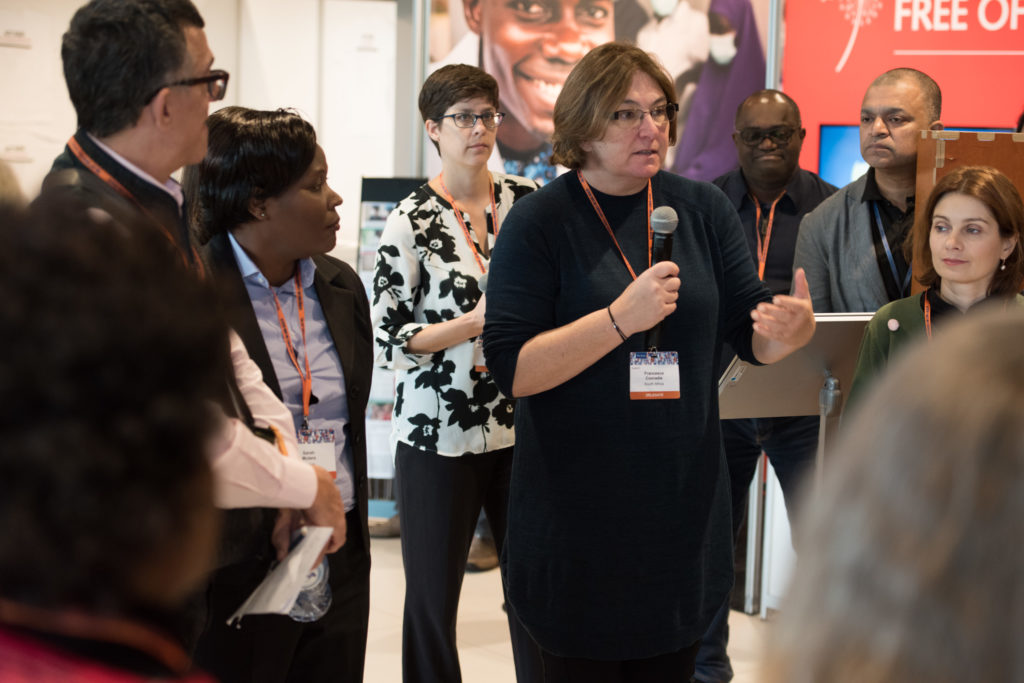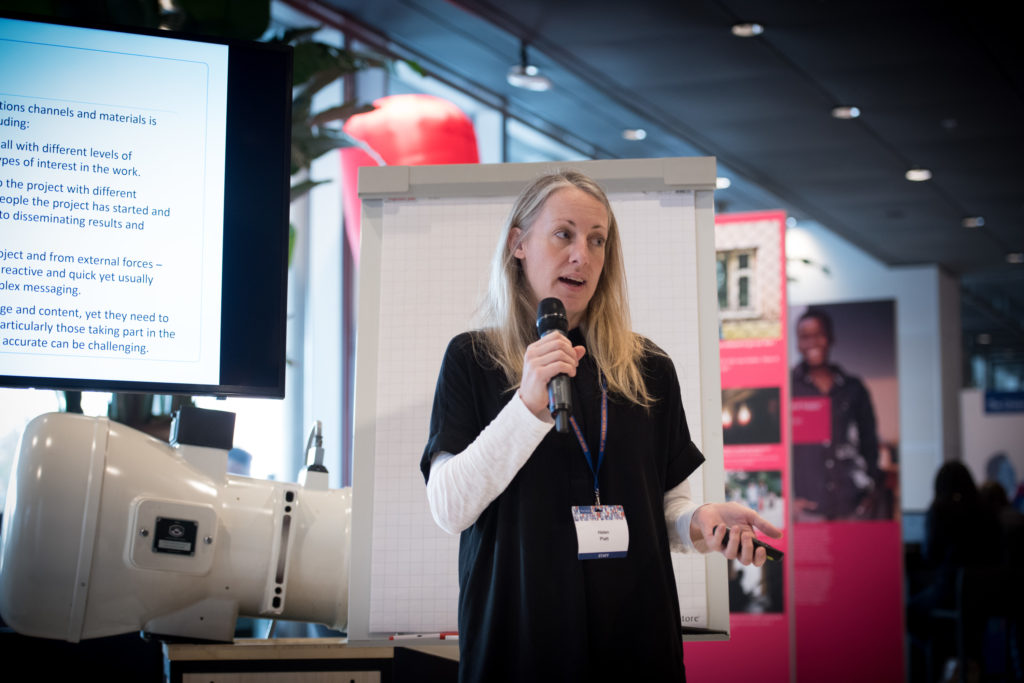
On the final day of the 49th Union World Conference on Lung Health, TREAT TB brought together a panel of researchers, community engagement experts, and communications experts to discuss how to improve the dissemination of clinical trial results. They addressed issues such as identifying appropriate communications channels, making complex topics accessible to all stakeholders, discussing unfavorable outcomes, and using research results to advocate for change.
During this session, panelists identified key challenges and shared their experiences and strategies for successful results dissemination. The panel began with a discussion of the ethical requirement to disseminate results, “We ask communities to bear the burden of clinical research and it is our responsibility as researchers to communicate the results,” said Dr. Francesca Conradie, a STREAM Principal Investigator and researcher at the Wits Health Consortium in South Africa.
Experts highlighted the importance of tailoring key messages to each stakeholder group. In fact, panelists agreed that the first step in any successful dissemination exercise should be developing a communications plan that incorporates appropriate messaging, formats, and channels for all target audiences. This is essential to ensure that results reach all key stakeholders affected by the trial, while guaranteeing that key messages remain consistent and true to the research results.
Panelists also stressed the important role played by community engagement in successfully disseminating results. Community engagement throughout the trial helps ensure that communities and stakeholders understand the trial processes, as well as its aims and objectives. Furthermore, by establishing a collaborative relationship from the outset, communities are prepared to receive and share results when available, whether they be positive, negative, or inconclusive. Panelists agreed that maintaining a constant, transparent dialogue between researchers and the community throughout the trial was critical and stressed the important role that community advisory boards can play in ensuring that communications methods are appropriate for each audience. Nombuyiselo Tshandu, community liaison officer at the Johannesburg trial site, shared her experience of using storytelling and role play to communicate complex issues to communities affected by the STREAM trial in South Africa. She explained that this approach actively involves the community and presents key messages in a visual and interactive manner, making the information easier to grasp.

Establishing positive media relations is also essential to ensure effective dissemination of trial results. Journalists provide an invaluable channel for communicating research results widely. However, the relationship between researchers and the media is often weak, which panelists agreed can make managing dissemination challenging. “It is vital to establish relationships with key media outlets at the start of the trial and to brief key media individually at the point of releasing results in order for the results to be reported accurately and fairly”, said Helen Platt, Director of Communications at The Union.
To learn more about disseminating clinical trial results, you can find the slides from this session, here.
